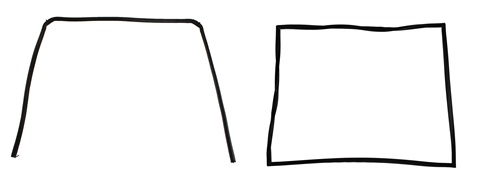
Replacing your oven door seal is a pretty straightforward process: unhook the old one, replace it with new one, and you're pretty much done!
Of course, the part before that - finding and purchasing the right seal for your oven - threatens to be slightly more complicated. As with any cooker part, the wide range of brands and models on the market can make things very confusing, and then there's the question of whether you want a 3-sided seal or a 4-sided seal. Unless you own a triangular oven, you might well assume that you need four sides, but unfortunately that's not quite how it works.
The good news is that we're here to make it simple. Our snazzy search filters allow you to specify your cooker's brand and model number to make sure you're shopping for the right stuff. As for the 3/4 sides issue...well, we'll clear that one up for you right now:
- A 4-sided oven door seal will completely seal up the space around your oven door, keeping the heat in and making the whole operation a lot more energy-efficient. An oven with a broken door seal will take much longer to reach the designated temperature, and the longer your oven is on, the more energy you'll use and the higher your utility bill will be at the end of the month. With that in mind, it's not hard to see why you should seal up your oven! However...
- Some ovens aren't supposed to be sealed up completely. These appliances draw air in through the bottom of the oven door, and that's why the 3-sided oven door seal exists: for ovens (mostly gas ovens) that rely on that gap at the bottom. Oh, and don't worry - since heat rises, very little heat is lost through the lower, unsealed side.
Hopefully, this explains the importance of establishing whether your oven needs a 3- or 4-sided seal. If you're interested in ordering one of our universal oven door seal kits, please bear in mind that, while they are compatible with the vast majority of appliances, they are not suitable for:
- Ovens with curved corners
- Ovens with more than one hole at each corner
Check your appliance first to avoid disappointment!